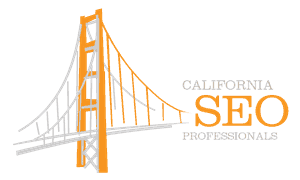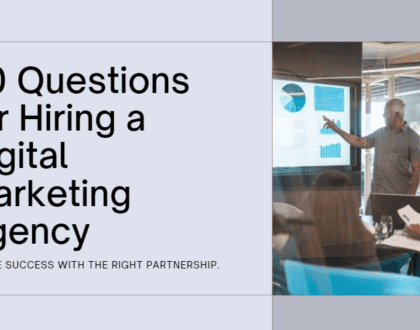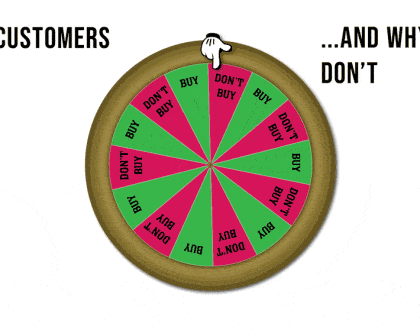The Ultimate Guide to Personalize Targeted Advertising with AI
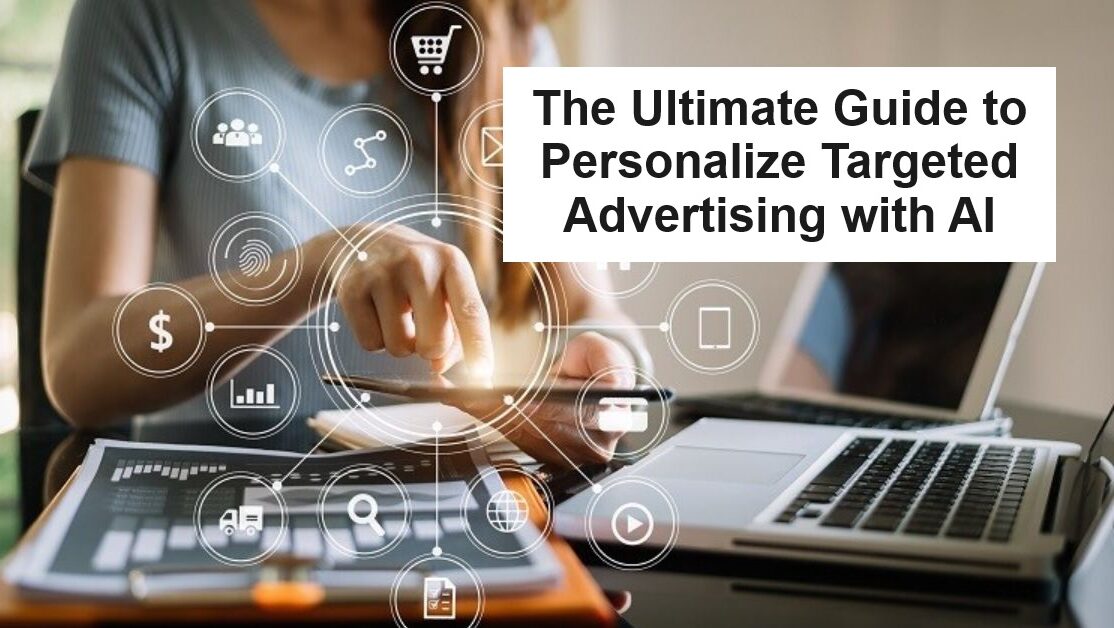
Today, we are bombarded with ads and marketing messages that have nothing to do with us. This is because traditional advertising fails to capture user interest and falls short of driving expected results. Luckily, AI-powered ad personalization delivers relevant ads that yield fruitful outcomes. Want to know how? Let’s dive in!
In this competitive landscape, no matter how unique your offerings are, every niche is ferociously competitive, and getting noticed in the crowd is a long haul for any marketeer.
Nowadays, advertising doesn’t provide helpful recommendations but feels more like an intrusion. Plus, generic ads are insufficient to capture the audience’s attention. But what if there was a way to deliver a relevant message to someone at the right time?
AI (artificial intelligence) personalization is the key to standing out in the noise and connecting with your target audience with the right message.
With AI-powered ad personalization, you can craft targeted ads that resonate with each user. AI has become the key to unleashing effective and targeted advertising.
In this post, we will explore the potential of AI advertising, learn how it works, understand its benefits and challenges, and finally get an answer to the question, ‘Can AI become a key to unlocking effective targeted advertising?
Sounds right? Let’s dive into the world of personalized targeting advertising with AI!
What is AI Marketing?
AI marketing uses artificial intelligence technologies to create, automate, and optimize all marketing tasks. It involves leveraging machine learning, data analysis, email apps, and other AI tools to gain valuable insights into customer behavior and deliver targeted advertising and personalized experiences.
The following is the breakdown of how artificial intelligence is used in marketing.
- Predictive Analysis and Targeting: AI algorithms are adept at analyzing customers’ past behavior, which helps them predict their future actions. This means you can create targeted ads for users who are genuinely interested in your offerings. Your targeted ads can allure them to your brand even before your prospects actively search for the products.
- Understanding Customers: AI analyzes huge amounts of data from various sources, including social media interactions, website behavior, and purchase history. This information allows you to create detailed customer profiles based on similar interests, which helps with segmentation.
- Personalization: As AI algorithms analyze customer behavior, you can create personalized, targeted messages and ads for those interested in your products and services. This significantly increases engagement and boosts conversion rates.
- Automation: Using AI, you can automate repetitive tasks such as content creation, campaign management, and budget optimization. This frees up your sales and marketing team to focus on strategic tasks.
AI marketing offers numerous benefits to your business, including:
- Boost Efficiency: As AI automates many mundane tasks, your sales and marketing team can focus on more strategic work, which boosts overall efficiency.
- Increased ROI: AI helps deliver personalized experiences and create targeted campaigns, significantly increasing your ROI (return on investment).
- Data-driven Decisions: By gaining valuable insights into customer behavior, you can refine your marketing strategies and make data-driven decisions.
- Improved Customer Experience: As already mentioned, personalization is the key to capturing prospects’ attention. AI can help you create more relevant ads and improve customer experience.
How Does Personalized Targeted Advertising with AI Work?
Personalized AI ads utilize the power of artificial intelligence to create and deliver more relevant ads to each prospective customer interested in your offerings.
The following is the breakdown of how personalized AI ads work:
Data Collection
Data collection is one of the crucial steps in personalized AI advertising. This stage involves collecting prospects’ information from various sources, such as website behavior, social media interactions, and buying history. Once the information is gathered, you can build a comprehensive customer profile that informs the AI decision-making process.
The following pointers show how data collection works.
Sources of Data: The data collection is done by two methods i.e. explicit and implicit. The explicit data collection involves gathering data that users provide their info knowingly such as demographics (gender, age, location, etc.), signup using personal email addresses, survey responses, etc.
Implicit data collection is gathering user data passively based on their behavior and interaction, such as website behavior (time spent on specific web pages, browsing history, items in the cart, etc.), keywords and phrases used for research, interaction with apps, activities in social media (like, comments, shares, saves, followed pages, etc.), and purchase history (spending habits, preferred brands, past purchases, etc.).
Methods: There are several methods of data collection, like
- Cookies– Tracks the browsing activity of users across websites.
- Web beacons– Track user activity and gather data.
- Social media tracking pixels– Tracks user activity across the web.
- Web analytics tools– Provides deep insights into user behavior and website traffic.
- App analytics– Tracks user behavior within apps installed on mobile devices.
Audience Segmentation
Audience segmentation is a crucial aspect of marketing. Combined with artificial intelligence, it can become a powerful tool to drive strong results. Segmentation involves dividing users into small and specific groups based on categories such as online behavior, interests, demographics, and needs. AI analyzes users’ data and helps you segment them into groups with similar interests and characteristics.
AI is adept at analyzing vast data from several sources, such as purchase history, social media, and website behavior, and creating granular audience segments. After understanding different segments, you can tailor your marketing campaigns and allocate resources accordingly to gain maximum results.
Dynamic Creative Optimization
Dynamic creative optimization, or DCO, leverages artificial intelligence to create multiple variations of an ad template. Each variation features a different attribute that can be personalized based on user insights and data. This leads to a highly personalized ad experience that deeply resonates with each viewer, improving your campaigns’ performance, boosting engagement, and increasing conversions.
DCO delivers personalized ads to the user, making them feel like they are designed for them, leading to high click-through rates. Users see relevant ads that address their needs. Based on their data, you can make real-time adjustments in your campaign.
The following are the vital ingredients of dynamic creative optimization:
- Basic Ad Template: This includes the overall design of the ad and contains core messages.
- Dynamic Attributes: These parts can be customized and easily adjusted in real-time. For example, videos or images can display products to the user based on their browsing history.
Predictive Modeling
Predictive modeling involves using gathered data and statistical techniques to forecast future results. It allows you to target users who are more likely to be interested in your offerings, giving you the power to identify users with a high potential to convert into paying customers.
AI identifies trends and patterns that help you predict future outcomes. You can allocate resources to users with the highest conversion potential. This enables your sales and marketing team to reach a customer base that has broader potential.
7 Strategies for Personalized Targeted Advertising With AI
Here is the list of 7 strategies to utilize artificial intelligence for impactful and result-focused ad campaigns.
1. Optimize Buyer’s Journey
In AI-targeted advertising, optimizing the buyer journey means tailoring your marketing messages and ads to each specific stage your prospective customers go through in a buying journey.
The following are the different stages a buyer goes through before making a final purchase.
- Awareness: The customer realizes that they have a need or problem. In this stage, they might not know about your offerings.
- Consideration: Once the customer identifies the problem, they look for solutions. In this stage, they might encounter your business name and know about your offerings.
- Decision: Customers research different options and pick the best-suited solution for their problem. In this stage, they compare your solution with your competitors before making the final purchase.
Here, AI analyzes user behavior in all stages of their buying journey. This allows you to create highly focused advertising campaigns that match specific needs at every stage of the buying journey. Create focused ads that address specific needs at each stage to encourage them toward conversion.
2. AI-Powered Retargeting
AI-powered retargeting is leveraging artificial intelligence to personalize and refine the process of reminding users who have interacted with your business earlier but didn’t make the final purchase—for example, reminding a user about the product left in the cart and additional discounts.
Generic retargeting ads seem repetitive and might annoy your prospects. AI uses algorithms and data to personalize the retargeting experience. It can be an ad recommending similar products based on browsing history or the item they abandoned in the cart.
Showcasing products that customers are interested in increases the chances of conversion. AI-personalized retargeted ads make your marketing messages more effective. After analyzing user behavior, AI determines the right amount of time to display these ads when there is more potential for conversion.
3. Personalized Email Marketing
AI personalized email marketing uses artificial intelligence to create tailored content for email and deliver it to each prospective customer. It is far beyond including the receiver’s name in the greeting.
AI analyzes vast amounts of data across various sources to understand subscribers better. Based on time spent on specific sections of the site, spending habits, demographics, click-through rates, open rates, previous interactions with email campaigns, etc., AI understands the users and their preferences.
AI analyzes previous email performance and identifies the subject lines that have received the highest open rates. It can personalize the subject line for each subscribed user, which increases the likelihood of your email being opened.
AI helps you send tailored emails to the subscribers, which feels more like one-on-one interaction and leads to high engagement and clickthrough rates. For example, rather than sending a generic welcome message, AI personalizes your emails by mentioning specific e-books they downloaded.
4. AI Social Listening
In personalized AI advertising, social listening means using artificial intelligence to track and analyze online interactions about your business brand, industry, and competitors across all social media platforms.
AI social listening tools dig deep and analyze brand mentions, including your offerings, without direct tags. They monitor all discussions about emerging trends and topics relevant to your industry. For example, businesses specializing in tours and travel can identify discussions about trending and popular travel destinations and tailor their ad campaigns to specific locations.
You can gain valuable insights into what people say about your competitors, including their strengths and weaknesses. AI can also analyze the level of emotion in a conversation and evaluate positive, negative, or neutral emotions toward your brand.
5. Personalized Website Experience
Personalization is crucial in online marketing. It is about creating relevant and unique experiences for every website visitor. AI can personalize the website experience for every person who lands on your site. Using data analysis capabilities, AI recommends products or relevant accessories to users.
Based on user data, AI can adjust website content. For example, an e-commerce website can showcase different product categories depending on users’ demographics and locations. Also, after analyzing user behavior on a website, AI can trigger chat support whenever needed. This can be helpful for users facing technical issues or browsing complex product pages.
Personalized website experience with AI ensures that your visitors are engaged in your website. By showing relevant information and product recommendations, AI encourages users to take the next desired actions.
6. AI-Powered Budget and ROAS Optimization
Budgeting and ROAS (return on ad spend) optimization are as crucial as personalized ads and marketing messages. AI can adeptly analyze the performance of your campaigns and optimize budget location across various platforms. This ensures that your ads are in front of the right prospects at the right moment, maximizing your ROAS.
Using AI, you can automate and optimize the bidding process of your ad campaigns. This ensures your budget is effectively allocated to the most relevant prospects across different platforms. AI also ensures you spend your budget efficiently on those ad placements that are likely to generate more conversions.
Based on predictions and data analysis, AI automatically sets bids for every ad auction. It utilizes strategies such as optimized conversions, maximum clicks within budget, or target-specific return on ROAS. When you let AI manage the complex bidding process, you can save time and resources. Plus, with the correct bids, you can reach the right prospects at the right time, increasing your conversion rate.
7. Data Privacy and Transparency
To gain maximum customers, you need to earn their trust first. So, you need to be transparent about your data collection practices and use of artificial intelligence. Ensure you obtain users’ consent before collecting their data and provide clear options to opt-out whenever they want.
You need to inform your users clearly about what data you are collecting, how it will be used, and with whom you might share it (if applicable). Provide a clear option to opt in or opt out for personalization and data collection.
Consider implementing robust security measures to safeguard user’s collected data from misuse, breaches, or unauthorized access. Inform users about artificial intelligence and its use to personalize their ad experience.
The Bottomline
AI-powered personalization is the future of advertising. Utilizing all the strategies we discussed above can help businesses offer a targeted experience that deeply resonates with each prospective customer.
From optimized buyer journeys, retargeting, and email marketing to social listening, web experience, budgeting, and ROAS optimization, AI can help you personalize every aspect of your marketing and quickly boost your conversion rate.
Artificial intelligence enables businesses to craft more effective and successful campaigns that increase engagement and sales!
Recommended Posts
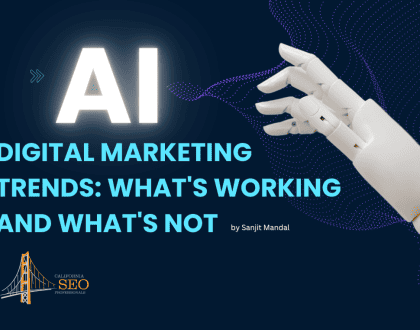
AI Digital Marketing Trends: What’s Working and What’s Not
November 28, 2023
